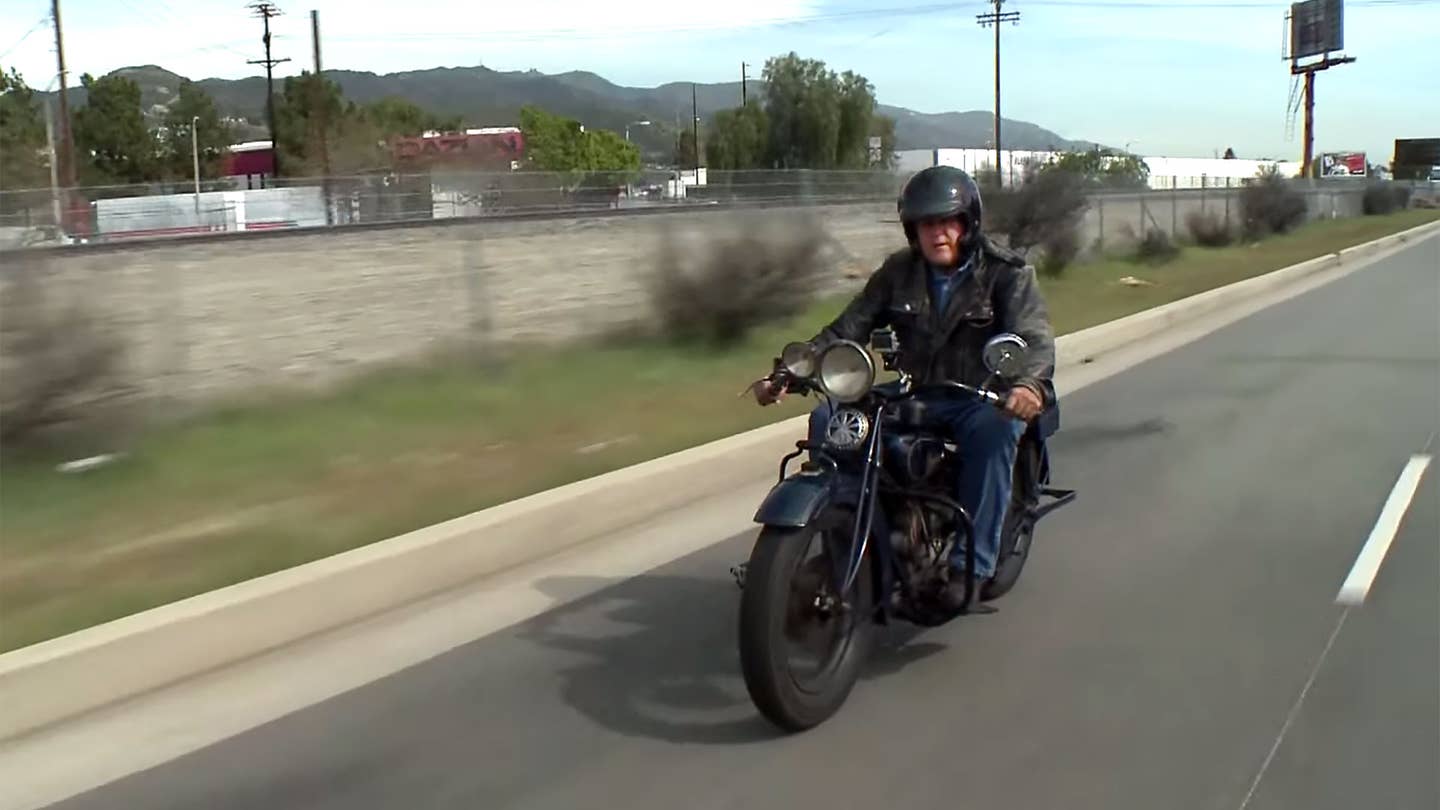Jay Leno Explains Why His 1931 Indian Scout Is the Great American Bike
Two (dirty) wheels for the win.

We may earn revenue from the products available on this page and participate in affiliate programs. Learn more ›
Recent episodes of Jay Leno’s Garage have been focused on cars of yesteryear, each flaunting heavy modifications. For example, The LaBeastioni, a 1915 fire truck morphed into a hot rod, a SEMA-worthy Datsun 1200 pickup with a Skyline facelift, and a Datsun 240Z owned by Fast & Furious star Sung Kang. All beautiful, all deserving of the airtime. But Jay’s throwback this week differs in that it’s almost wholly factory and only features two wheels: his 1931 Indian 101 Scout.
It wasn’t the fastest bike in the world, but it was among the most revolutionary cycles by virtue of its superb handling and sturdiness. Leno dubs it one of the great American motorcycles, a title few dare to contest. At 370 pounds, it was a light bike, well powered by a 45 cu in 750 cc V-twin. Those 18 ponies were more than enough to get the three-speed cranking, and while Indian had a larger offering, the 1,210 cc Chief, the more lithe and nimble Scout was preferred by most.
Charles Franklin, the Irish moto racing phenom, was recruited by Indian to helm the engineering division after propelling one of their bikes to an impressive triple podium finish at Isle of Man TT in 1911. Stateside, Franklin set to work, first tackling how to generate sizable power out of a flathead powerplant when everyone else in the game was championing overhead valves. Manufacturers like Harley-Davidson gravitated towards overheads because they were superior in terms of output, though they weren’t as trusted due to metallurgy issues of the era. (They often broke.) Franklin found a way to get equal oomph from his flathead kit meaning, as Leno explains, that this was the one bike Harley-Davidson was scared of. “It was just right, right out of the box,” the comic muses.
Leno walks us through the engine, showing how the camshafts pull double duty operating the intake and exhaust valves, the clever magneto, and how the gear-driven system - noisier and more costly - was the best choice for the job because it would last the life of the bike. Leno is enamored with the 101 Scout because “you couldn’t break these. They won the most races not because they were quick, but because they were reliable,” particularly in longer races, those over 100 miles.
Our host left his two-wheeled treasure factory original, for the most part. He swapped the carburetor for a different, period-correct option that worked better, and he disconnected the oil pump from the throttle because it was messily firing too much oil when Leno would roll on hard. It got some new pistons a few years back, courtesy of a friend inside Indian. Otherwise, he hasn’t painted it or spruced it up. “Sometimes you make them so shiny, you don’t want to ride it,” noted Leno.
On the road, as evidence for how stable the handling is, Leno goes hands-free over a few bumps at speed. The bike doesn’t budge from its path. Leno also notes the 101 was the premiere choice for early (and some current) Wall of Death riders. Though, as Leno closes, you don't need to scream around a rickety well to appreciate the Scout: "It's perfect to put in second gear and ride down a dusty trail at 30 mph."

